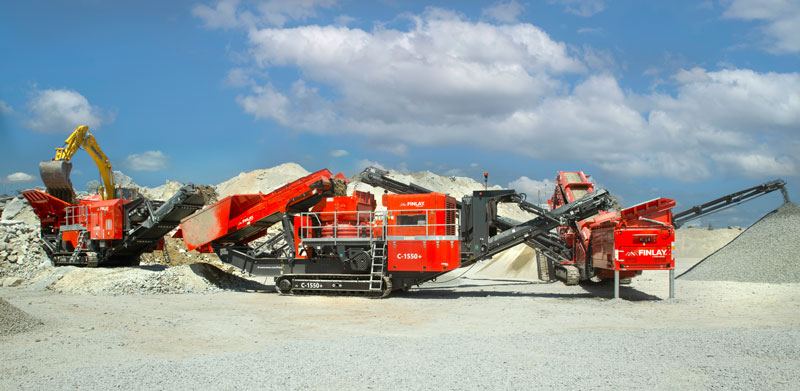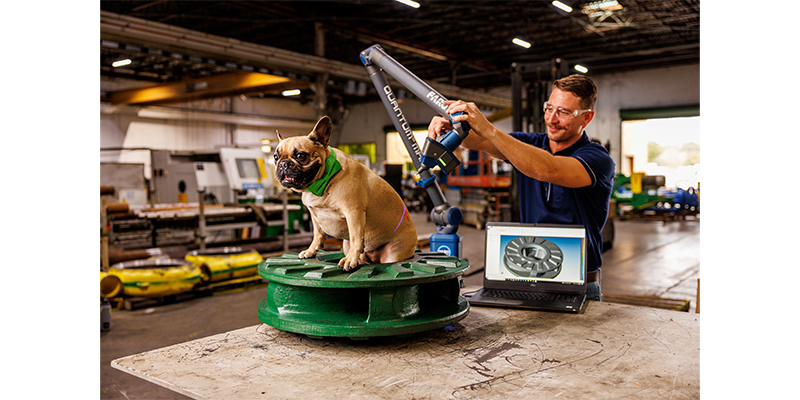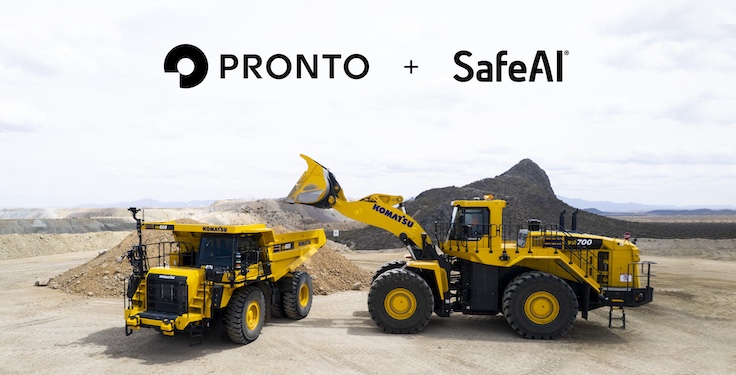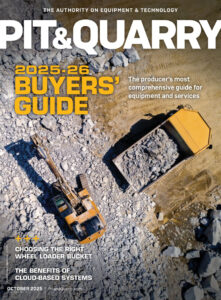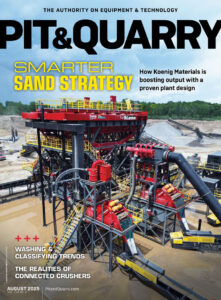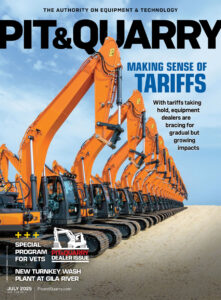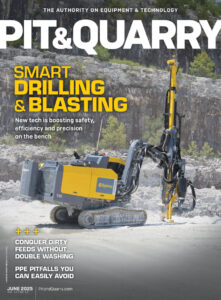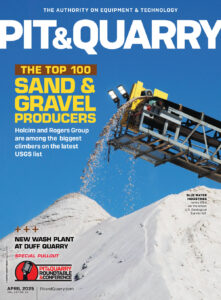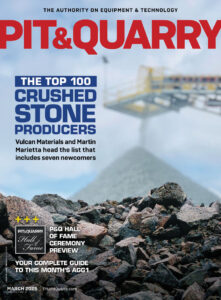Crushing isn’t quite what it used to be.
Telematics systems are reshaping how mobile crushing operations run. While the data these provide is undeniably valuable, some modern systems also introduce headaches for operators and those supporting them.
Surely, crushing operations of the future will utilize telematics because of the value many now show. But for now, manufacturers, dealers and early adopters must collaborate to maximize the technology’s potential.
“Most manufacturers have some level of technology integrated into their systems,” says Micah Tysver, president of Crush Mode. “Some use it more extensively than others. Personally, I’m on the fence. I want enough technology to properly and efficiently diagnose machines, but not so much that it overcomplicates things.”
Unfortunately, the hardware tied to telematics systems isn’t tremendously welcoming to the dust and grime of aggregate operations. Also, with pits and quarries often in remote areas, some producers struggle with connectivity.
Additionally, aggregate operations are not afforded the predictability that a bottling plant or an automotive assembly line have. As a result, telematics systems face unique challenges in crushed stone, sand and gravel applications.
“Every shot of stone and sand and gravel mined in a pit constantly varies,” says Greg Donecker, president and owner of Kemper. “We’re not as consistent as a Coca-Cola plant, for example, but our industry is embracing the technology, and it is going to help us as an industry increase profitability and predictability to give us clearer visibility into future operations.”
Tysver’s take
Tysver, for one, sees the value telematics systems can provide to crusher operators. Real-time production data is useful, he says, as is having a handle on operational uptime and downtime.
Still, Tysver contends that some plants are equipped with too many sensors. In select cases, sensor issues have set operations back and significantly impacted production.
Such a dilemma, then, begs the question: If a plant can’t run at peak because of a value-adding technology, how much value is it really adding?
The answer probably depends on who’s addressing the question.
“Anytime one of these new ideas or systems is rolled out to the field, it looks great on paper or when you’re in a conference room discussing it,” Tysver says. “But it seems like anytime you start dealing with these in a real-world situation – especially in this industry where no two applications and, seemingly, no two environments are the same – it can be really hard to get them dialed in.”
Don’t get Tysver wrong: He believes the industry will one day arrive to a place where technology providers aim to be. He also contends that the only way to improve technology is to test it in real-world applications.
Small gains are at least being made. Tysver, for example, loves the idea that events such as machine errors and engine shutdowns can be recorded. There’s value in that information, he says.
“We can quickly diagnose that way, and you kind of eliminate the finger pointing with the old-school operators,” Tysver says.
More gains are likely ahead for the industry.
“A lot comes down to this: Are manufacturers, dealers and customers willing to take the risk on a new system,” Tysver says. “It’s going to be a cost to the manufacturer and the dealer, and you don’t want to put that cost on the customer. But I do think you have to put these out there to really put them to the test. It just takes time to work the bugs out of the systems.”

Another perspective
Bryant Fazer, president at Rock Machinery, agrees some producers aren’t yet ready to adopt telematics systems for their mobile crushing fleets.
Fazer, however, says more producers want telematics these days than those who do not.
“Our track machines through Terex Finlay come with T-Link, where there’s telematics on them,” he says. “I can say from a dealer’s perspective that it’s really helped us in certain situations where the operator may not have been as experienced – or the operator we came in and trained wasn’t the operator three months later, and then they had issues with their machines. We were able to go back with telematics and tell the story.”
For those not currently leveraging telematics on their mobile plants, lack of use often comes down to comfort level.
“Not everyone is set up and capable of fully dealing with electrics and sensors,” Fazer says. “They may rely on the manufacturer quite a bit. We have an electrician on staff. We build our electrical panels in house. I would say we’re very well prepared to take care of it.”
And while faulty sensors can cause production slowdowns, Rock Machinery has learned from its experience with T-Link.
“If there’s a sensor that got knocked out because it’s a harsh environment, we’re aware of that and work very closely with the automation team from our manufacturer to understand if that’s the right sensor to work in the environment – or if we did not properly protect it,” Fazer says. “We’ve had a sensor go down before, but then we’re looking at putting a cover over it to make sure a rock doesn’t hit it and take it out. It’s an ongoing conversation we’re always having with our manufacturer and electrician to ensure sensors are protected.”
From Fazer’s view, a sensor shutting a plant down is a small price to pay for a more significant event telematics might help avoid.
“The automation will be a second set of eyes protecting the machine,” Fazer says. “If something goes wrong, it will protect itself and return to normal operation once things calm down. If the issue continues – for example, if oversized material is still being produced – the system will protect the machine and record what happened.”
Industry outlook
Whether through telematics systems or other technologies, Donecker stresses that today’s producers are simply looking for better ways to operate their crushing plants.
“They’re leveraging companies like ours to find more efficient equipment solutions and better ways of integrating technology into their operations to reduce operating costs and downtime,” he says.
Donecker says the company sees interest in automating both traditional and portable plants – and for good reason.
“There’s an increase in predictive maintenance practices utilizing technology,” he says. “Bearing temperature devices and vibration analyses are now available to predict what’s going on in a machine within a plant. This is definitely increasing.”
The information also gives Kemper and other dealers new visibility into areas they previously lacked clarity on.
“It helps us better understand our inventory and what spare parts we need to keep our customers running,” Donecker says.
Still, more research and development is undoubtedly ahead to maximize the potential of telematics systems.
“Technology is a wonderful thing,” Tysver says. “It’s a great management tool. But I’m still not a fan of overcomplicating it. Keep it simple, but have enough tech where you can manage it.”
Related: Crushing & Hydraulic Breaking | P&Q University Handbook

